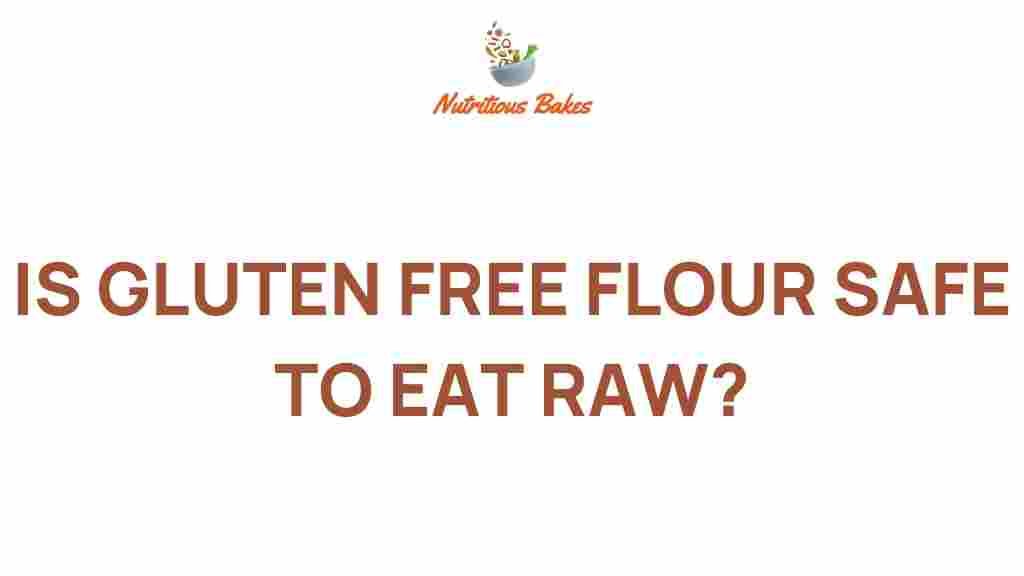The Raw Truth: Is Gluten-Free Flour Safe to Eat Uncooked?
In recent years, the rise of gluten-free diets has transformed the culinary landscape, prompting many to explore alternatives to traditional wheat flour. One common question that arises among health-conscious individuals and cooking enthusiasts is whether gluten-free flour is safe to eat uncooked. This article dives deep into the world of gluten-free flour, examining its safety, nutritional aspects, and culinary uses, especially in the context of raw eating.
Understanding Gluten-Free Flour
Gluten-free flour is a blend of various flours made from grains, seeds, nuts, and legumes that do not contain gluten, a protein found in wheat, barley, and rye. Common types of gluten-free flour include:
- Almond flour
- Coconut flour
- Brown rice flour
- Oat flour (certified gluten-free)
- Chickpea flour
- Potato starch
- Arrowroot flour
Each type of gluten-free flour comes with its unique flavor profile and nutritional benefits. However, they also share some common concerns, particularly regarding food safety when consumed raw.
Raw Eating and Food Safety
Raw eating has gained popularity among health enthusiasts who advocate for the consumption of uncooked, unprocessed foods. While many fruits, vegetables, nuts, and seeds are safe to eat raw, the same cannot be said for all flours. Raw flour can pose health risks due to the potential presence of harmful bacteria, such as Salmonella and E. coli.
Health Risks Associated with Raw Gluten-Free Flour
Here are some key health risks associated with consuming raw gluten-free flour:
- Bacterial Contamination: Just like traditional wheat flour, gluten-free flour can be contaminated with bacteria during harvesting, processing, or packaging.
- Digestive Issues: Consuming raw flour can lead to gastrointestinal distress, as the body may struggle to digest raw starches effectively.
- Allergic Reactions: Some gluten-free flours, such as almond or coconut flour, can trigger allergic reactions in sensitive individuals.
For these reasons, it is generally advised to cook or bake gluten-free flour before consumption to mitigate these risks.
Nutrition of Gluten-Free Flour
While gluten-free flour is often considered healthier than traditional flour, it’s essential to understand its nutritional profile. Many gluten-free flours are rich in nutrients, such as:
- Fiber: Flours like almond and coconut are high in fiber, promoting digestive health.
- Healthy Fats: Almond flour contains good fats that can improve heart health.
- Vitamins and Minerals: Different gluten-free flours provide various vitamins and minerals. For instance, chickpea flour is rich in protein and iron.
However, the nutritional content can vary significantly between different types of gluten-free flour, so it’s essential to read labels and choose wisely.
How to Use Gluten-Free Flour in Baking
Cooking and baking with gluten-free flour requires some adjustments. Here are some culinary tips for effectively using gluten-free flour:
- Blend Different Flours: Combining different gluten-free flours can improve texture and flavor. For example, a mix of almond flour and coconut flour can yield delightful results.
- Add Binders: Ingredients like eggs or xanthan gum can help mimic the elasticity gluten provides, making baked goods less crumbly.
- Adjust Liquids: Gluten-free flour absorbs more liquid than wheat flour, so you may need to adjust your recipes accordingly.
- Experiment with Ratios: Each gluten-free flour has different properties, so it may take some experimentation to find the right ratios for your recipes.
Step-by-Step: Making Safe Gluten-Free Flour-Based Recipes
Here is a simple step-by-step process to create a gluten-free baked good safely:
- Choose Your Flour: Select a gluten-free flour that suits your recipe. For instance, use almond flour for a moist cake or chickpea flour for savory pancakes.
- Gather Ingredients: Assemble all necessary ingredients, including binders if needed.
- Mix Dry Ingredients: Combine your gluten-free flour with other dry ingredients (baking powder, sugar, etc.) in a bowl.
- Mix Wet Ingredients: In a separate bowl, mix wet ingredients (eggs, milk, oil) thoroughly.
- Combine and Bake: Gradually mix the wet ingredients into the dry ingredients. Pour the mixture into a baking dish and bake according to your recipe’s instructions.
- Cool Before Serving: Allow your baked goods to cool before serving to enhance flavor and texture.
Troubleshooting Common Issues
When baking with gluten-free flour, you may encounter some common issues. Here are troubleshooting tips to help you out:
- Dry Texture: If your baked goods are too dry, consider adding more liquid or fat to your recipe.
- Crumbly Results: Ensure you use a binder, such as xanthan gum or eggs, to improve the structure.
- Flat Baked Goods: This can happen if your leavening agents are expired or not used in the right proportions.
Exploring Gluten Alternatives
Aside from gluten-free flour, there are numerous gluten alternatives that can be used in various recipes. Some popular options include:
- Oats: Ground oats can make a great flour substitute in many recipes; ensure they are certified gluten-free.
- Nut Flours: Almond and hazelnut flours are excellent for baking and add a unique flavor.
- Legume Flours: Flours made from lentils, peas, or chickpeas are high in protein and provide a great alternative.
When using gluten alternatives, remember to consider the flavor and texture they bring to your dish, as they can significantly alter the final product.
Conclusion
In conclusion, while gluten-free flour offers numerous health benefits and culinary versatility, it poses health risks when consumed raw. It is crucial to cook or bake gluten-free flour before eating to avoid potential food safety issues. By understanding the nutritional aspects and using appropriate cooking techniques, you can safely enjoy gluten-free baked goods.
For more insights on gluten-free cooking and baking, check out this comprehensive guide. And remember, experimenting with different flour types and gluten alternatives can lead to delicious and healthy meals!
For further reading on food safety, visit the Centers for Disease Control and Prevention (CDC) website, where you can find valuable information on safe food handling practices.
This article is in the category Tips and created by NutritiousBakes Team
